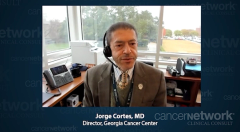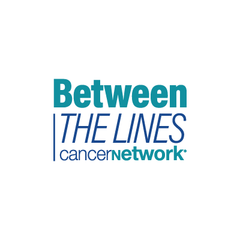
Ponatinib Dose-Ranging Study in Chronic-Phase CML: Summary
Jorge E. Cortes, MD and Hagop Kantarjian, MD share a summary on ponatinib in CML and ALL and exploration of potential future studies.
Episodes in this series

Transcript:
Hagop Kantarjian, MD: We agree on most points. Ponatinib is a highly effective drug and a toxic drug. The dose-adjusted response improves on the toxicity and maintains the efficacy. It’s a useful drug in chronic myeloid leukemia [CML] in the salvage setting and maybe needs to be moved to salvage 1. It’s 1 of the most important drugs in Philadelphia-positive ALL [acute lymphoblastic leukemia]. Even though we agree that 45 mg is needed in T315I mutation as the induction dose, in all other situations, I prefer to use 30 mg, and you prefer the 45 mg. Is that a fair summary?
Jorge E. Cortes, MD: Yes, it is. Let me ask you. It’s a hypothetical question because it’s never going to happen. But we used ponatinib, and there was a randomized study also in the front line. These were closed because of the concerns and all that. If you’re interested in treatment discontinuation, think about that and not the survival possibility, because there’s probably not going to be any. Considering that you get only about 45% of patients to a sustained deep molecular response, should it be re-explored in that context if the risk is much lower?
Hagop Kantarjian, MD: I don’t think so. Ponatinib is a drug for which we have to be respectful about the toxicity. We’re not talking about just arterial occlusive events, which can be serious, including mortality, loss of vision, mesenteric occlusion, and peripheral arterial occlusive disease. You’re talking about severe hypertension in at least 20% of the patients; severe skin rashes, which I’ve seen, and they’re quite disfiguring in a proportion of the patients; and pancreatitis. Considering the second-generation TKIs [tyrosine kinase inhibitors], we have data with a 20-year follow-up. If you include only CML-related mortality or mortality from CML and transplant, the estimated 20-year survival from our institution [The University of Texas MD Anderson Cancer Center] is about 90%. There’s no strategy that’s worth taking those risks, including the potential of increasing the treatment-free remission.
We’re pursuing other treatment-free remission approaches, as you know. We’re including adding venetoclax to dasatinib, and more recently we’re excited about the potential of adding oral decitabine to dasatinib. Those strategies are safe, and we’ll see if they will increase the opportunity of getting patients in a treatment-free remission. Remember, patients who have hypertension take oral pills for their lifetime. Patients who have diabetes take pills for their lifetime, and they don’t complain about it. I don’t see why putting an aim of treatment-free remission has become the holy grail that we need to pursue. Patients with CML can mostly live their normal life, in the large majority of the patients taking a pill a day. The TKIs are generic, so the issue of cost isn’t there. We know the long-term adverse effects, which are quite reasonable with imatinib and second-generation TKIs. I don’t see using ponatinib at all in the frontline setting of CML to achieve the holy grail of a treatment-free remission.
Jorge E. Cortes, MD: I agree. Should we do that study? Emotionally, I’d love to do it because it has the potential to improve that. But rationally, I agree with you. It’s a completely different context. In a patient who’s had failure of 2 or 3 TKIs, T315I mutation, the stakes are high. That risk of 9% or 10% doesn’t seem that high when the patient has a risk of mortality much higher. For a patient who has a complete cytogenetic response, maybe a major molecular response, and you’re trying to get a deep molecular response, that balance starts looking the other way. Part of that is we’re guilty of how we’ve transmitted this message. Aiming for treatment-free remission is a valid pain point. But if you don’t have those criteria and you have to take a pill, there are a lot of other cancers for which we’d love to have that scenario: you take a pill a day or a couple of pills a day, and you’re going to have a normal life expectancy. That’s what we do with hypertension. You take your pill, and you’re not going to have a heart attack. But you have to keep taking it. We need to take this in the context of what’s at stake and then balance the risk-benefit ratio.
This has been fun, so thank you. It’s great to see you. We agree on most things, and there’s a bit of a difference on a few things. Not great, but I’ll keep using 45 mg.
Hagop Kantarjian, MD: Good to talk to you, Jorge.
Jorge E. Cortes, MD: Good to see you. Thank you. Good to talk to you.
Transcript edited for clarity.
Newsletter
Stay up to date on recent advances in the multidisciplinary approach to cancer.
































































































